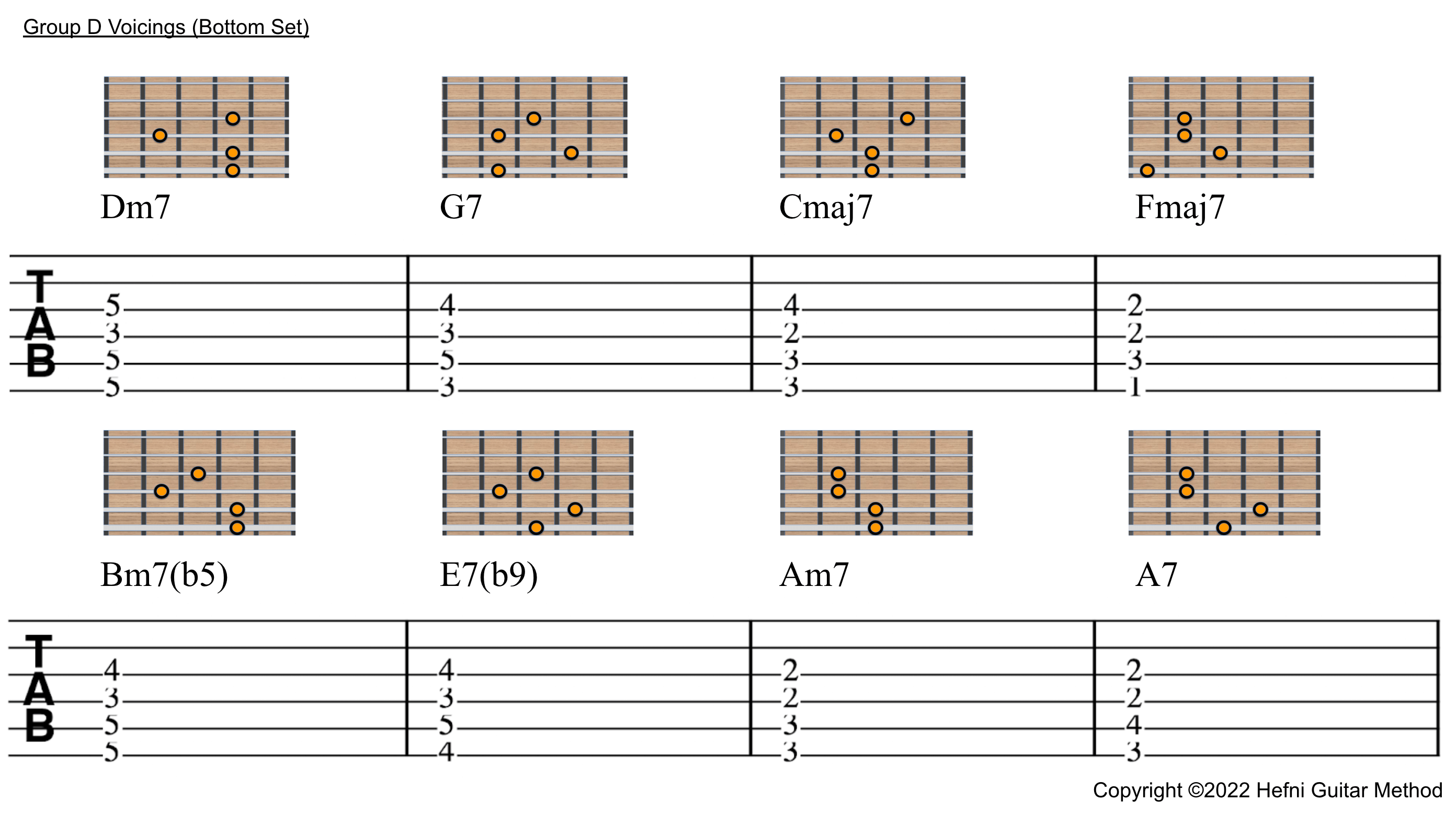Welcome to the Jazz Chords Workshop Lesson 11.
This is the penultimate lesson in this series for learning jazz chords.
The voicings this week span the 1st to 5th frets and are the bottom structure of Group D voicings (Jazz).
Click the video below to watch the lesson.
Learning Aids
The chord shapes and TABs for this lesson are provided as follows.

Primary Takeaways
The main takeaways of lesson 11 are as follows:
1. E7(b9) shape is the same as those in Lessons 9 and 10.
As before, the E7(b9) chord shape is the same for the bottom group voicings. This is also a diminished 7th chord that can be played every 3 frets up or down the fretboard.
2. Group D Voicings work over the Mixolydian Scale Shape.
Although we have not introduced the scales workshop, Group D voicings sit squarely over the mixolydian scale shape specifically in this key, G Mixolydian.
3. V7 to Imaj7 common notes
The top note of the G7 and the Cmaj7 in this voicing group is the same. You can use this note to pivot your fingering when changing between these chords.
4. Cmaj7 to Fmaj7 chord change
The change in fingering between Cmaj7 and Fmaj7 in this position is a very useful chord change especially on the bottom strings. Although it is a simple I-IV chord change, this particular fingering change as presented in this lesson is one that you will use more often than others. Therefore, it will be to highly advantageous to commit this particular change to memory.
Tips for better learning
Building upon what we have learnt in previous lessons, the following still hold true and may help you remember the concepts.
-
-
-
- The Dm7 (in bar 1) and Bm7(b5) (in bar 5)chords differ by one note.
- The Cmaj7 (in bar 3) and Amin7 (bar 7) chords differ by one note.
- The E7(b9) is always the same shape in the same group voicings.
- Remember the I-IV shape change from this lesson, as you will encounter it many times again in many other keys.
-
-
Short Note on Voice Leading.
Voice leading essentially refers to the smooth transition of chord tones (literally voices) from chord chord to another. If you have been following this series, the chord voicings chosen have already taken the voice leading into account so you do not need to learn anything extra. Simply play the chord changes as covered and you will already be using the appropriate voice leading. In other words, these group voicing exercises automatically ingrain the voice leading within the learner without the pain of learning theory.
Follow us on Facebook, Instagram and Youtube.
